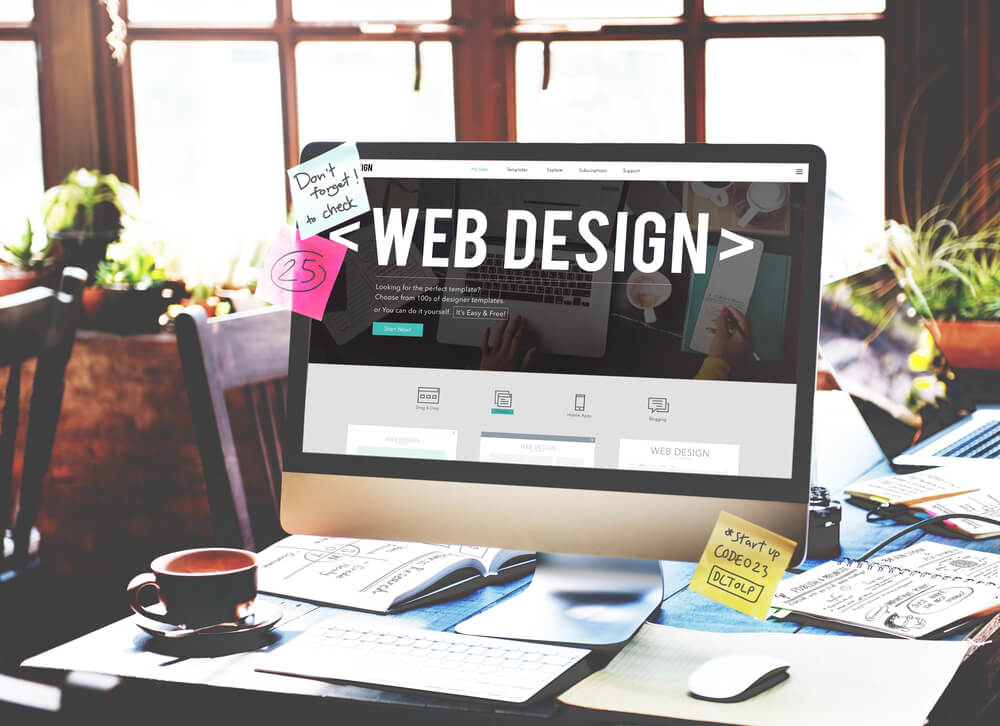As the internet continues to evolve rapidly, it’s no surprise that the future of web design will expand along with it. This can have implications for all businesses with an online presence. It is common knowledge that a website is a business’ calling card, and first place potential customers will learn about products and services. When a website caters to specific internet search algorithms, customers can easily find behaviors and trends. By keeping up with the future of web design, you’ll be able to stay current on how these changes can affect your business visibility and branding.
What’s Next For the Future of Web Design
Many exciting innovations will change the way we build websites and interact with businesses online. Many of these design upgrades are already in place. Other web design transformations are currently underway, but users may not use the designs widely yet. The pandemic showed us the importance of having an online presence as business owners and the power of knowing how to implement changes that can make or break your bottom line.
As a result, the look and feel of websites as we know will be very different in the years to come. Here are a few upcoming changes in the future of web design that you should be aware of:
- AI and chatbots — If you’ve watched any recent sci-fi movies lately, you’ve probably heard of AI, also known as artificial intelligence. AI primarily presents as a transformational technology of the future. However, the future is here. AI is already a prominent part of our lives in the form of chatbots. You’ve probably noticed that most companies have chatbots on their websites available to answer general questions and refer you to a customer service number when necessary.
Although a relatively controversial topic, AI is becoming part of our daily online experience. By the end of this year, almost 50% of businesses with an online presence are expected to have a chatbot. As AI evolves, it will include automated e‑commerce shopping experiences and assistive technologies.
- Immersive experiences — 3D visual immersive experiences are starting to gain steam but are still far from becoming mainstream. Bringing virtual reality technologies to the forefront will require significant system changes and upgrades that are too far-reaching to be considered commercial. For now, 3D visuals are front and center as immersive experiences continue to capture audience attention through websites that take up entire screens.
- Data Science — The use of extensive data tools to manage your online business is readily available. Now, the future of web design will include concurrent changes and adjustments using real-time data. By integrating data and web design simultaneously, your business website will always be responsive. It is a tool to improve your business decision-making that generates returns over time significantly. This evolution will also apply to standard technology in our daily lives, like refrigerators and cars.
- Augmented reality — Augmented reality gives your customer an accurate look at your product or services in real-time. Most consumers prefer some form of AR on a company’s website. Organizations like IKEA’s AR on their mobile app are an excellent example of how users can improve their customer experience. It requires the appropriate hardware and software to create an interactive environment that uses location-based and real-world elements to sell your product or service. Other applications like Google Lens and facial recognition will have several benefits when connected to AR.
- Pageless design — Implementing pageless websites are on the horizon for the future of web design. Simply put, a pageless design is a website that mimics a social media page as a continuous scroll. Since this type of design used for social media generates addictive engagement and engaging user interfaces, it is optimal for businesses to maintain the attention of current and potential customers. When implemented, exceptional website speeds, automatic responsiveness, and narrative layouts will improve the flow and connectedness of all web elements for a truly immersive experience. This design is essential to maintaining a low bounce rate.
- Voice — If you’ve ever used Alexa for Amazon or Siri for Apple, you’ve participated in the future of web design. The use of the voice interface is now part of our daily routines and will soon be adopted as a conversational approach in web design. Instead of asking to play a song or find a podcast, a website voice interface will integrate long-tail keywords and FAQs into its content. Rather than finding the appropriate website tab or link, you will be able to conversate with a website to find the information you need.
- Storytelling — Content is king, and no company understands this better than Netflix. With over 1300 TV shows and 4300 movies, Netflix is at the forefront of providing content for everyone. The future of web design is in the ability to create personalized experience maps that can easily guide your potential customers based on their online behaviors. By integrating data across all platforms, you’ll be able to reach your target audience and keep them engaged on your business website while giving them control over their experience.
Plan for the Future of Web Design
While some of these elements listed are far off in the web’s future, many web designers introduce these new technologies into our everyday lives. Now is the time to make strategic marketing moves to integrate and include these elements in preparation for the evolution. If computer technology is updating every two years, new web designs will inevitably follow suit.
As award-winning experts in digital marketing strategy, we understand the importance of incorporating cutting-edge technology into your business goals and objectives. Whether you currently have an online presence or not, now is the time to ensure you are not left behind. Your customers are looking for your products and services online. We make sure they find you and make a purchase.
Give us a call today for a free marketing assessment to get started!
